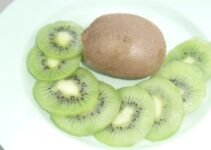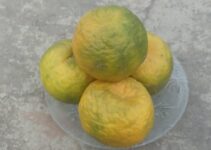Several people are getting confused with Kumquats and oranges because of their similarities. And even for some people, Kumquat is a unique name in the fruit category. For them, it is a must to know that Kumquat is an edible fruit that resembles orange but is smaller. The fruit is eaten along with the peel. The name kumquat comes from Chinese ‘Cantonese’ and means ‘golden tangerine’. The fruit is native to South Asia and was initially cultivated in China. It is considered a sacred plant in China and is given as a gift during the Lunar New Year. Now, the juicy fruit is grown all over the world. It can be eaten like grapes, olives, and peels. It is full of health and medicinal benefits.
Top Health benefits of kumquat
Kumquat plays a vital role in the body’s overall wellness. It reduces the chances of diabetes, smooths digestion, and enhances the body’s immunity. It is also suitable for skin, hair, and health.
- Helps in glowing skin: The presence of antioxidants and other compounds helps to minimise the impact of free radicals, thus preventing the adverse effects of wrinkles, pimples, acne, and blackheads.
- Encourage weight loss: It tends to the feeling of a full stomach because of high fibre, water, and low calories. Thus, it is ideal for those who want to lose weight.
- Strength of your hair: An adequate amount of vitamin C and antioxidants helps in the quality, growth, and strengthening of hair, thus reducing the probability of hair fall and loss.
- Prevent diabetes: It is suitable for digestion and the digestive system because of enough fibre. These dietary fibres also balance insulin and glucose in the body, thus preventing sugar and diabetes.
- Protects the body from degenerative diseases: It has an abundant amount of vitamins A, C, and E, which act against free radicals, thus saving the body from many ailments.
- Good for overall health: Kumquats are a whole of phytonutrients. It has adequate minerals, vitamins, dietary fibre, and pigments. It is eaten along with peel, which brings many health benefits because it contains essential oils, antioxidants, tannins, pectin, non-starch polysaccharides, and hemicellulose.
- Full of antioxidants: The fruit is packed with bio-chemical compounds such as carotenes, tannins, lutein, zeaxanthin, essential oils like limonene, pinene, a-microlens, a-bergamotene, etc.
- Helps in wound healing: Plenty of vitamin C (100 g of it provides 73% of recommended daily allowances) helps protect the body from wound and injury-related problems. It is also helpful in collagen synthesis.
- Good for teeth health: Calcium is the most critical component for teeth and bone formation.
- Helps in metabolism: The fruit has an adequate amount of B-complex such as thiamin, niacin, pyridoxine, folates, and pantothenic acid, all helps in the metabolism of carbohydrate, protein, and fats.
Nutritional facts
100 g of the fruit contains the following nutritional value: calories (274), protein (3.8g), Fat (0.4g), carbohydrate (72.1g), calcium (266mg), phosphorous (97mg), iron (1.7mg), sodium (30mg), potassium (995mg), vitamin A (2, 530IU), riboflavin (0.40mg), thiamine (0.35mg) and ascorbic acid (151mg).
Uses of Kumquats
- It makes jellies, sauce, fruit concentrates, jams, and jellies.
- Its slices are used in salads to make it relish.
- It makes marmalades, candies, and preserves because of its thin peel.
- It makes ice cream, pie, cakes, and juice.
- It is used to make the dishes decorative.
- Pickles are also made of it.
- It is added to meat dishes due to its acidic features.
- Due to its sweet flavour, it is used for candies, desserts, cocktails, and garnishes.
- Liquor, extracts, and products used as traditional medicines are prepared from it.
Types of kumquats
The different essential varieties of kumquats are given below:
- Round kumquat: It is the most widely used and cultivated species, given as a gift in New Year, and has cold tolerance characteristics.
- Oval kumquat: It is also known as Nagami kumquat. The entire fruit, including its skin, is eaten because of its sweet flavour.
- Jiangsu kumquat: It is an edible fruit used to make marmalade and jellies. Its round leaves can recognise it.
- Centennial variegated kumquat: It is distinguished because of its variegated colour in green and yellow stripes. Its skin is comparatively thin.
Kumquat hybrids
Due to its popularity in South Asia and the rest of the world, the fruit is hybridised. The various hybrids form of the edible, as well as the ornamental plants are given below:
- Calamondin mandarin orange x kumquat
- Yuzuquat yuzu x kumquat
- Orangequat: Satsuma mandarin x kumquat
- Sunquat: lemon x kumquat
- Citrangequat:citrange x kumquat
- Limequat: key lime x kumquat
- Procimequat: limequat x kumquat
Selection tips: One should choose those kumquats which are bright orange.
Storage Tips: At room temperature, it can be kept or used for up to three days, while refrigerated kumquats can be used for up to two weeks.
How to eat them: Eat the ripe orange colour fruit as a whole, including its peel.
Growing season: The growing season of the fruit is from November to March.






Very nice information.